
Do you have a question about the GMC 2009 Sierra 1500 Crew Cab and is the answer not in the manual?
| Brand | GMC |
|---|---|
| Model | 2009 Sierra 1500 Crew Cab |
| Category | Automobile |
| Language | English |
Information on front seat adjustable head restraints and proper positioning.
Details on manual and power seat adjustments, including lumbar support.
Instructions for folding rear seat cushions and seatbacks for access.
Guidelines on proper wearing of safety belts for adults and children.
Guidance on using safety belts for older children and proper restraint types.
Explanation of airbag locations, inflation, and how they provide restraint.
Procedure for checking safety belts, buckles, and anchorages for proper function.
Information on the ignition key, door locks, and key tag.
Details on RKE system operation, range, and troubleshooting.
Instructions on using the remote start feature and its limitations.
How to lock and unlock doors using various methods, including power locks.
Safety precautions for leaving children in vehicles and operation of manual/power windows.
Information on the content theft-deterrent alarm system and testing the alarm.
Guidelines for optimal vehicle performance during the initial break-in period.
Explanation of the four positions of the ignition switch and their functions.
Details on vehicle accessories that remain powered after engine shutdown.
Procedure for starting the engine and important notes on engine cranking.
Information on the fast idle system and its conditions for operation.
How to adjust the position of the throttle and brake pedals for driver comfort.
Instructions for using the engine coolant heater for cold weather starting.
Explanation of how the system operates on half or all cylinders for fuel economy.
Description of shift lever positions and the electronic shift position indicator.
Operation of the four-wheel drive system, including transfer case settings.
Information on how the front axle engages and disengages with the transfer case.
How to set and release the parking brake and related warning systems.
Procedure for shifting into Park and warnings about vehicle movement.
Precautions regarding carbon monoxide (CO) in engine exhaust.
Safety advice for running the engine while parked, especially in enclosed areas.
Details on manual, automatic dimming, outside, and power foldaway mirrors.
Explanation of Ultrasonic Rear Parking Assist (URPA) system operation and limitations.
Information on RVC system operation, limitations, and turning it on/off.
Overview of OnStar services, features, and contact information.
How to program the universal home remote system for devices like garage door openers.
Location and operation of storage areas like the glove box and cupholders.
Identification of main components on the base/uplevel instrument panel.
How to use the hazard warning flasher button to alert others.
How to sound the horn using the steering wheel controls.
Information on adjusting the steering wheel position for driver comfort.
Controls for turn signals, lane changes, and headlamp functions.
How to use the high-beam headlamps to signal a driver to pass.
Operation of the windshield wipers using the control lever.
How the Rainsense™ feature detects moisture and controls wipers automatically.
Operation of the windshield washer and heated washer fluid system.
Guidelines and warnings for using cruise control safely.
Operation of exterior lamps including headlamps, parking lamps, and taillamps.
How the automatic headlamp system operates based on light sensor input.
How puddle lamps operate when unlocking the vehicle with the RKE transmitter.
Control and operation of fog lamps, including automatic parking lamp engagement.
Information on the button for installing an auxiliary roof lamp.
How to control the brightness of the instrument panel lights.
How dome lamps operate when doors are opened or manually turned on.
Illuminated entry feature operation when doors are opened.
How interior lamps turn on automatically when the key is removed from ignition.
How to turn reading lamps on and off, including locations.
How to turn on the cargo lamp using the instrument panel brightness knob.
How the EPM system manages battery voltage for performance and life.
Feature that shuts off interior lights if left on after ignition is turned off.
How to connect auxiliary electrical equipment to power outlets.
Location and use of the ashtray and cigarette lighter.
Controlling heating, ventilation, and air conditioning with manual and automatic systems.
How warning lights and gages signal vehicle problems and what to do.
Description of the instrument cluster showing vehicle running information.
How the speedometer and odometer display vehicle speed and distance.
How the trip odometer shows distance driven since last reset.
How the tachometer displays engine speed in revolutions per minute (rpm).
Chimes and lights that remind driver and passenger to buckle safety belts.
Indicates airbag system electrical problems; requires immediate service if stays on.
Shows the status of the right front passenger frontal airbag.
Indicates if the passenger sensing system has turned off the frontal airbag.
Indicates potential problems with the charging system or generator drive belt.
Shows battery voltage when ignition is on and charging system condition when engine is running.
Indicates potential brake problems or low brake fluid.
Indicates a problem with the ABS or regular brake system.
Indicates if the StabiliTrak system is active or if there is a problem.
Shows the engine coolant temperature and how hard the vehicle is working.
Warns of significantly underinflated tires or system malfunctions.
Indicates a problem with the fuel, ignition, or emission control systems.
Tips for better fuel economy and defensive driving techniques.
Dangers of drinking and driving and its effects on reflexes and judgment.
How brakes, steering, and accelerator help control the vehicle.
Explanation of braking action, reaction time, and stopping distances.
How ABS works to prevent braking skids and assist steering during hard braking.
How to use steering and brakes effectively in emergency situations.
Vehicle stability enhancement system for directional control in difficult conditions.
How the locking rear axle provides more traction in low traction conditions.
Information on power steering and steering tips for safe driving.
Techniques for recovering a vehicle that has gone off the road.
Tips for safely passing another vehicle on a two-lane road.
What happens when control systems lack friction and how to handle emergencies.
Guidance on safe off-road driving, including skills and before-you-go checks.
Advice on judging hill steepness and driving safely uphill, downhill, and across.
Tips for driving in low traction conditions and avoiding hazards.
Precautions and advice for driving through water, including hazards of deep water.
Checklist for preparing your vehicle for a long trip, including service and fluid checks.
Tips for staying alert and avoiding fatigue while driving.
Tips for driving on steep hills or through mountains, including gear selection.
How to free a stuck vehicle, including using traction systems and rocking the vehicle.
Guidelines for safe cargo loading on the load floor and roof for off-road conditions.
Instructions for replacing exterior and interior bulbs, including halogen bulbs.
How to remove and replace windshield wiper blades.
Information on tire maintenance, inflation, wear, and when to replace tires.
Guidelines for interior cleaning, fabric/carpet care, and leather care.
Explanation of the Vehicle Identification Number (VIN) and engine identification.
Information on add-on electrical equipment, fuses, and power options.
Approximate fluid capacities and engine specifications for gasoline engines.
Overview of maintenance requirements, intervals, and schedule for gasoline engines.
Specific services required at different mileage intervals for gasoline engines.
Important notes and details related to specific maintenance items and services.
Owner checks and services to ensure vehicle safety and performance.
Guidelines for towing a disabled vehicle and recreational towing.
Considerations for dinghy and dolly towing, including capacity and equipment.
Awareness for owners considering body installations on pickups.
Procedures for dinghy towing two-wheel-drive and four-wheel-drive vehicles.
Procedures for dolly towing two-wheel-drive vehicles from the front or rear.
How trailer tongue weight affects vehicle gross weight and capacity.
Importance of correct hitch equipment for crosswinds and rough roads.
Information on fifth wheel and gooseneck trailers and hitch placement.
Instructions for attaching safety chains between vehicle and trailer.
How Tow/Haul mode assists with heavy trailers or loads for improved control.
Requirements for trailer brake systems and tapping into vehicle's hydraulic brake system.
Explanation of the ITBC system for electric trailer brakes and its integration.
Description of the control panel for adjusting trailer gain and manual brake application.
How the ITBC system displays messages and information on the DIC.
Steps for resolving concerns through the Customer Satisfaction Procedure.
How to report safety defects to government agencies and General Motors.
Information on ordering service manuals and bulletins for vehicle repair.
Explanation of vehicle computer modules that record performance and driver data.
Purpose of EDRs in recording crash data to assist in investigations.
Overview of OnStar services, data collection, and privacy.
How navigation systems store and manage trip information.
How RFID technology is used for vehicle functions and data privacy.

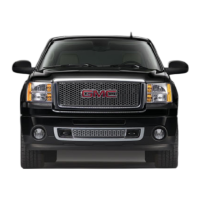

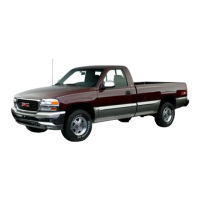
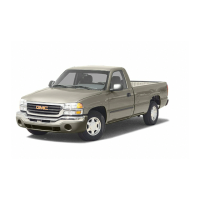
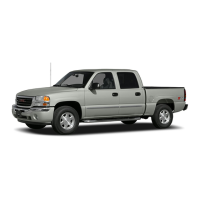
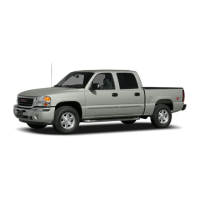




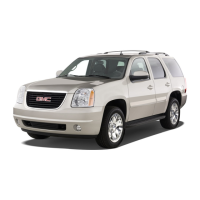
